8 Nights / 9 Days

Arrival transfer from Airport and check-in to hotel. Jaipur, or the City of Victory, was founded in 1727 by Maharaja Sawai Jai Singh II and is a well planned city of magnificent palaces and building. Built from rose-colored terra cotta, it has given it the name ‘Pink City’. Nowadays the Capital of Rajasthan with a population of over 1 million, it is a city full of contrasts with bazaars teeming with turbaned elders and jean clad youngsters to camels, horses and a multitude of vehicles. Jaipur’s focal point is the magnificent Hawa Mahal, otherwise known as the Palace of the Winds; primarily an elaborate five storey face with projecting windows and balconies, behind which the ladies of the court used to sit and observe life going on in the streets below.Overnight at Hotel.
Today is a full days sightseeing in and around Jaipur beginning with Amber, the ancient capital of the region prior to Jaipur, and located 11 km north of the City. Now a deserted complex crowning the crest of a hill with panoramic views, Amber Fort is extremely well preserved and a fascinating place to explore. The forts majestic ramparts follow the natural contours of the ridge and he palace is full of hidden gems – the Sheesh Mahal (Palace of mirrors), Jas Mandir with its latticed windows and glass inlay work and Zenana. (Women’s quarters) Elephants still carry visitors in stately splendor to the main Palace, through magnificent high gateways.
In the afternoon in Jaipur city, visit the opulent Maharaja’s City Palace which occupies the heart of Jai Singh II’s city and has been home to the City’s rulers for 200 years. A superb blend of Rajput and Mughal architecture, the interiors of the Palace are lavishly furnished and decorated and the Museum houses a fabulous collection of textiles, art and crafts and arms. The Jantar Mantar or Observatory was built by Jai Singh II, a keen astronomer, in 1728. It resembles a collection of giant sculptures and was used to determine the position of the stars and planets, accurately calculate Jaipur’s time, make horoscopes and is today still used to forecast the expected arrival date and intensity of the monsoon and summer temperatures. Overnight at Hotel.
Today drive to Ranthombore.
Ranthambore – the monuments are in well condition and worth visiting and it has also from top of the fort marvelous view of the lake from & Ranthambore National Park .Ranthambore Fort is situated inside the Ranthambore National Park, which is 15 Km far from Sawai Madhopur Railway Station.Well known fort with the great history of johar and braveness in wars This fort built in 944 vast in size; it encompasses an area of nearly 07-KM in circumference its history dates back of the 11th Century when Rao Hamir Hada ruled from is ramparts its massive battlements enclose one of India’s most ancient forts. Legend has It that in 1381 ten thousand women committed johar or mass suicide history records however show that the fort with stood the assaults of a galaxy of generals and emperors.
After noon game drive in the Park .Ranthombore is the national park located in Rajasthan, covering a huge area of 500 kms with the fort at the entrance. It gets its name from two hill ranges, “Ranas” and “Thambore” which meet there. It is a dry deciduous forest having three lakes – Rajbaug, Padam and Malik.
The main tourists’ attraction here is the royal Bengal tiger. The 500 km area of Ranthombore hosts 30-32 tigers which show that Ranthombore has a healthy ecosystem. For a relatively small area, the park has a rich diversity of fauna and flora – species list includes 300 trees, 50 aquatic plants, 272 birds, 12 reptiles including the Marsh Crocodile & amphibians and 30 mammals are in plenty too. A thousand chitals, 800 neelgais, one rattle and slothbear, many sambar, few chinkaras grazing, a blackbuck and many crocodiles & python also.
The birds like cormorants, miniwets, darters, drongos lapwings, onoles, cormorants, kingfishers, stone curlews and eagles &. thousands of peacocks and peahens. The mammals we The landscape is dotted with ancient Banyan Trees, Dhok & Pipal trees, clusters of mango trees and crisscrossed with evergreen belts. The terrain is made up of massive rock formations, steep scarps, perennial lakes and streams and forest suddenly opening up into large areas of Savannah. The terrain of Ranthambore Wildlife Sanctuary fluctuates between impregnable forests and open bush land. The forest is the typically dry deciduous type, with Dhok, being the most prominent tree.
Overnight stay will be at the hotel.
Morning game in the Park and after breakfast drive to Bundi Today morning drive 3 hours to Bundi. Bundi, a special destination with serene hills, valleys and cultivated farms. A well known tourist destination attracted Sir Rudyard Kipling, Rabindra Nath Tagore, Virginia Fass, Satyajit Ray and many more. Bundi is Rudyard Kipling’s first destination, in Hadoti; Bundi is the undiscovered splendor, 36 Kms from Kota ruled by the Hada Rajputs. Set in a narrow encircling gorge, the palaces and fortress of Bundi have a fairy tale like quality about them.
Few other places in India have such a picturesque location. Isolated and independent, the entire township appears like a miniature painting, frozen in time for the traveler. The ethereal beauty and grandeur of Bundi architecture is vividly brought out in the palaces of India. The rulers who built these palaces must have had terrific egos, a great sense of style and great sense of humour . Bundi is one of the few places in India which can lay its claim to an authentic school of painting. The splendid paintings in the Chitrashala in the Bundi fort and also in the fort at Dugari are par excellence and can be compared with probably the best anywhere in the world.
This little town of Bundi has till date retained a medieval atmosphere. The view over the town and surrounding countryside from the top are magical, especially at sun set. Inside the ramparts are huge reservoirs carved out of solid rock, and the Bhim Burj, the largest of the battle- fields, on which there is, mounted a famous cannon. The place offers a unique culture with baoris, palaces & forts, lakes and the beautiful natural surroundings. The Bundi Palace, built of locally quarried stone, presents one of the finest examples of Rajput architecture.
Intricately carved brackets, pillars and balconies and sculpted elephants are used liberally. Of special interest here are the Diwan-I-Am, Hathi Pol and the Naubat Khana. Also located in the palace is the famous Chitra Shala which provides a colourful glimpse of history – the walls and ceiling of this palace are completely covered with paintings of the Bundi School. Hunting and court scenes, festivals processions, animal and bird life and scenes from Lord Krishna’s life are still in very good condition.
Bundi has other palaces and hunting lodges like the Phool Sagar Palace, Sukh Mahal and Shikar Burj. Each palace has its own historical importance Phool Sagar houses a collection of murals done by the Italian prisoners of war who were held here; Sukh Niwas Palace evokes memories of Rudyard Kipling who not only stayed here but is believe to have found inspiration for his famous work Kim from the scenes that he saw here. Bundi is also known for its baoris or step-wells.
Unique to Rajasthan and Gujarat, the step-wells served as water reservoirs for the months of summer when there was a scarcity of drinking water. At one time, there were over fifty such wells in Bundi but most of them have suffered the ravages of time. One very good example still to be found in the heart of the town is called Raniji-ki-Baori. It has exquisitely carved pillars and ornate archways – even the simple function of drawing water from the well became a special occasion for the womenfolk, they dressed up in their finery to visit these elaborate structures.
In a word Bundi offers virtually everything to a tourist in terms of its exclusive paintings, exotic forts, unparalleled architecture, lakes and step wells (Baoris), outdoor locations, wildlife or the folklore, traditional music and handicrafts. Overnight at Hotel.
Today visit the Udaipur, Jagdish Temple, Built in 1651 A.D. by Maharana Jagat Singh, this Indo-Aryan temple is dedicated to Lord Jagannath, a manifestation of Vishnu. The largest and the most beautiful temple of Udaipur, it is always seething with constant activity and noted for its beautiful sculpted images and towering shikhara. And then Visit City Palace, Udaipur’s fascinating City Palace is the largest royal complex in Rajasthan. Standing on a rocky promontory the palace has balconies, towers and cupolas and presents a wonderful view of the lake and the city.
The complex has eleven constituent Mahals (palaces), constructed by successive Maharanas during the three hundred years that followed the foundation of Udaipur in 1559. Added to this, Crystal Gallery and Durbar Hall within the complex is spectacular. Explore them for their mosaics, miniatures, mirror work and motifs Bhartiya Lok Kala Museum, Bharatiya Lok Kala Mandir is home to an attractive collection of folk dresses, puppets, ornaments, dolls, masks, folk musical instruments, folk deities and paintings. The museum is the best place for those interested in puppetry. Short amusing puppet shows are staged here. In addition, the museum runs short courses in puppet making and theatre.
In evening enjoy bout ride at Pichola Lake ,Pichola Lake, the beautiful stretch of water surrounding the two marvelous structures the Jag Niwas and Jag Mandir, is the life line of Udaipur city. All the palaces in the city of palaces are constructed to have a magnificent reflection in this lake. This lake was created in the 15th century and widened later and a dam across was also created in that period. It was Maharana UDAI SINGH II strengthened the Dam and widened the lake, as he was building his capital on the shore of the beautiful Lake. The lake was surrounded by many exquisite palaces, temples, hilly terrains, bathing ghats and many garden. Overnight at Hotel.
Today morning drive 6 hours to Jodhpur enroute visit the Ranakpur.
Ranakpur, about 90 km from Udaipur, is the largest Jain temple complex in India and dates to the 15th century. The main temple is dedicated to Adinath, the first Tirthankars. Intricate carvings detail mythological figures, patterns and motifs on the walls, pillars and domes there are 1444 ornately carved marble pillars in the complex and none of them are similar. The beautiful lace-like interiors of the domes are a superb example of western Indian temple style. Surya temple and other Jain temples are side attractions. (Temples open only at 1200 Hrs. Leather belts, footwear, bare legs and black clothing not allowed).
After lunch, drive 175 kms to Jodhpur, Call it by its many names and they will not do Jodhpur justice. An oasis in the arid Thar Desert, Jodhpur is the second largest city in the state of Rajasthan. Representing this colorful city with shades of blue, Jodhpur has a history that is rich and a present that beckons strongly to the discerning tourist.
Forts and palaces, temples and havelis, culture and tradition, spices and fabrics, color and texture, Jodhpur has them all and in plenty. Situated in western Rajasthan, Jodhpur has long attracted both the domestic and outside tourist. It not only offers tangibles, in terms of what you can see and buy but also fills one with a sense of history and the splendors of an era gone forever. The hospitality of the locals, the demure women, the colourful turbans -all set against the unmerciful desert is something to feel, not just see. Every pore of Jodhpur tells its own tales of heroic tales that made legends out of kings and soldiers, romances that continue to warm the heart and a time when epics were lived out on the streets by everyday man. Overnight at Hotel.
After breakfast checkout from hotel & Visit the Mehrangarh Fort . Considered one of India’s best forts, this invincible stronghold of Marwar sits on a steep hill lording over a wonderful view of its surroundings. It is also a beautiful fort and undoubtedly, the jewel of Jodhpur. Intricate latticed windows, elaborately carved panels and elegantly curved porches speak of beauty and taste. No matter what part of the fort you are in, its ambience will leave you in awe and your senses reeling. Take in the sight high up on the rampart where the second largest cannon in Asia rests.Also visit Jaswant Thada – a white marble memorial built in memory of Maharaja Jaswant II in 1899.
After lunch drive to Jaisalmer 285 km .Jaisalmer – a fairy-tale town in the Thar Desert founded about 800 years ago by Rawal Jaisal. Unlike any other city, this desert fortress is one of Rajasthan’s most exotic and unusual towns. Jaisalmer, an important ancient trading centre because of its strategic location on the camel trade routes, is often described as the ‘golden city’. The havelis, built by merchants of the 19th century, are exquisitely carved from golden-yellow sandstone and are still in a beautiful condition. The fort built by Rawal Jaisal in the 12th century, stands on the 80 metre high Trikuta hill, with beautifully carved Jain temples. The annual desert festival takes place in January and February each year and is a riot of colour and activity. Jaisalmer is also famous for its embroidery, Rajasthani mirror work, rugs, blankets, antique, stonework and camel safaris into the barren sand-duned desert.
In the evening, proceed for the excursion to Sam Sand dunes. Located at a distance of 42 kilometres from Jaisalmer, Sam Sand Dunes is the closest point to witness the total sandy desert. You can also see the patterns and motifs created by the shifting sands and air. Moreover, Sam Sand Dunes also provide you with an unforgettable experience of camel rides and the sunset. Overnight at Hotel.
After breakfast, leave for the city tour of Jaisalmer. Visit the famous Havelis (mansions) known for their frescoes. Jaisalmer’s strategic position on the camel terrain route bought it great wealth. The merchants grew prosperous and commissioned great havelis, or mansions, to flaunt their ever-growing status in society. Made of local golden-yellow sand stone and wood, some of the havelis are still in excellent condition. The most elaborate and magnificent of all the Jaisalmer havelis is the Patwaon Ki Haveli. Five Jain brothers built the Haveli between 1800 and 1860. Salim Singh Ki Haveli and Nathmal Ki Haveli are the other two havelis that are opened to visitors.
Built in 1156 by the Bhatti ruler, Jaisal, THE FORT here stands atop the 80 m high Trikuta hill. 3 walls and features 99 bastions surround the fort. Over the centuries, the golden sand stone fortress witnessed many battles between the Bhattis, the Mughals and the rathors of Jodhpur. Within the fort complex lie the beautifully carved Jain Temples built between the 12th and 15th centuries.
The Maharawals (rulers) of Jaisalmer were devout Hindus but were tolerant of Jainism, and encouraged art and religion. There are 7 temples in the complex – Chandraprabhu, Parasnath, Shitalnath, Sambhavnath, Shantinath, Kunthunath and Rikhabdev Temple. The temples are all connected by a series of corridors and walkways. Closeby is the Gyan Bhandar, a library founded in 1500 A.D. This house is priceless ancient manuscripts and other exhibits like astrological charts, besides the Jain equivalent of the Christian Shroud of Turin.
Evening drive to Sodakore 55 KM from Jaisalmer over night at Tented Camp.
After breakfast, today drive 230 kms to Jodhpur, DEPARTURE TRASNFER TO AIRPORT OR RAILWAYS STATION.
We are Dealing in Tour Operators Services. Read More...
 3D/2N
3D/2N
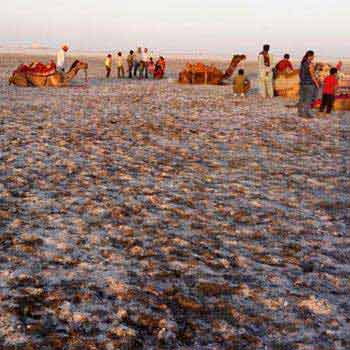 5D/4N
5D/4N
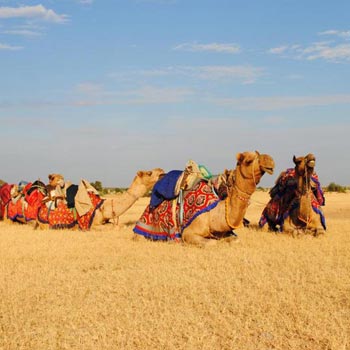 8D/7N
8D/7N
 10D/9N
10D/9N
Ahmedabad - Jamnagar - Dwarka - Porbandar - Somnath - Junagadh - Rajkot - Bhavnagar
 7D/6N
7D/6N
 7D/6N
7D/6N
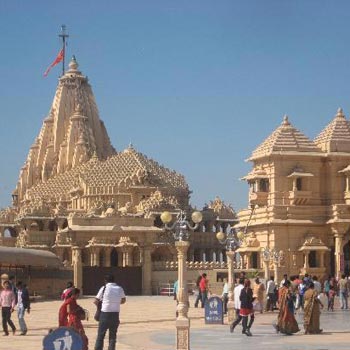 5D/4N
5D/4N
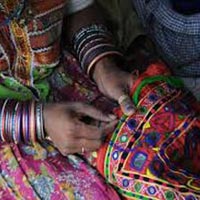 10D/9N
10D/9N
Ahmedabad - Gondal - Rajkot - Jamnagar - Bhuj - Patan
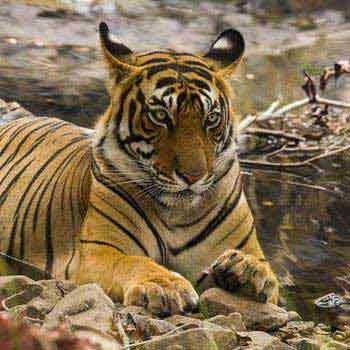 5D/4N
5D/4N
 9D/8N
9D/8N
Birding Tour for Corbett and Uttarakhand
Corbett - Pangot - Kumaon - Sundargarh - UP East - Sahibabad
 9D/8N
9D/8N
 9D/8N
9D/8N
Honeymoon Tour To New Zealand - Colors O..
Auckland - Rotorua - Queenstown - Christchurch
 9D/8N
9D/8N
 9D/8N
9D/8N
 9D/8N
9D/8N
Ahmedabad - Bhuj - Kutch - Dwarka - Somnath - Rajkot - Sasangir
 9D/8N
9D/8N
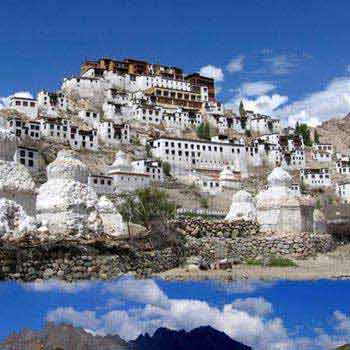 9D/8N
9D/8N
 9D/8N
9D/8N
New Delhi - Katra - Anantnag - Srinagar - Ganderbal - Baramulla
 13D/12N
13D/12N
Rajasthan Tour Package 12 Night - 13 Days
Ajmer - Bikaner - Jaipur - Jaisalmer - Jodhpur - Mount Abu - Pushkar - Udaipur
 13D/12N
13D/12N
12 Nights Rajasthan Package From Jaipur
Ajmer - Bikaner - Jaipur - Jaisalmer - Jodhpur - Mount Abu - Pushkar - Udaipur
 13D/12N
13D/12N
Rajasthan Tour Package 12 Night - 13 Days
Ajmer - Bikaner - Jaipur - Jaisalmer - Jodhpur - Mount Abu - Pushkar - Udaipur
 12D/11N
12D/11N
11 Nights 12 Days - Delhi Agra Rajasthan
New Delhi - Mathura - Agra - Jaipur - Ajmer - Pushkar - Udaipur - Mount Abu - Ranak..
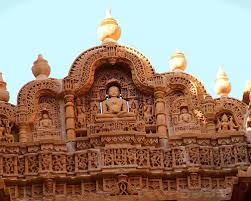 10D/9N
10D/9N
9 Night - 10 Days Rajasthan Tour Package
Ajmer - Jaipur - Jaisalmer - Jodhpur - Mount Abu - Udaipur
 10D/9N
10D/9N
Ajmer - Udaipur - Mount Abu - Jodhpur - ..
Ajmer - Jaisalmer - Jodhpur - Mount Abu - Udaipur - Jaipur
 9D/8N
9D/8N
9 Days Jaipur - Ajmer - Udaipur - Mount ..
Ajmer - Jaipur - Jaisalmer - Jodhpur - Mount Abu - Udaipur
 3D/2N
3D/2N
 5D/4N
5D/4N